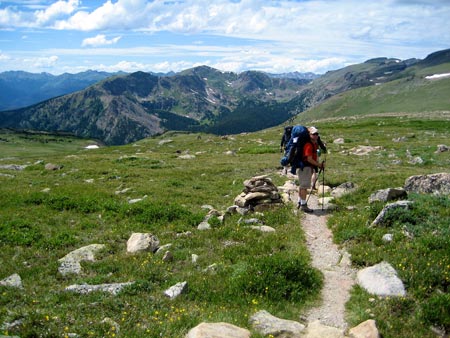By Michelle Werts


I think it’s safe to assume that most people — at least the ones reading this blog — know about the U.S. Forest Service within the U.S Department of Agriculture and how it is entrusted with the care of 193 million acres of national forests and grasslands. However, what is less known is the fact that the U.S. Forest Service isn’t the only government agency responsible for our nation’s forests. Forests are actually managed across a variety of government agencies, including many in the U.S. Department of the Interior (DOI).
So, last month, when our CEO, Scott Steen, submitted his written testimony to the House Committee on Appropriations Subcommittee on Interior, Environment and Related Agencies (try saying that three times fast), he also focused on showing support for a variety of programs across agencies. Throughout the next month, I (with the help of some friends) am going to explore these programs, revealing what they do, why they are important and how American Forests works with them to achieve our mission of protecting and restoring forests. First up is the DOI’s Bureau of Land Management (BLM).

If you had asked me two years ago to name the agency responsible for administering the most public land in the U.S., I would have said something like the National Park Service or U.S. Forest Service — and I would have been wrong. That distinction goes to the BLM, which oversees 245 million surface acres across 12 western states, plus 700 million acres of sub-surface mining estate. As the BLM puts it on its in website, it “may best be described as a small agency with a big mission: to sustain the health, diversity, and productivity of America’s public lands for the use and enjoyment of present and future generations.” Within this tiny agency with a big heart are two programs that are especially dear to American Forests: Public Domain Forest Management and National Landscape Conservation System.
BLM’s Public Domain Forest Management program focuses on the health, recovery and management of 58 million acres of forests and woodlands, while its National Landscape Conservation System aims to conserve, protect and restore 27 million acres of public land for their outstanding cultural, ecological and scientific values, including many national monuments, wild and scenic rivers and more. Over the years, American Forests Global ReLeaf has been proud to partner with BLM on dozens of projects to help restore the forests under its protection. For instance, this year, we’re working with the agency to plant 25,000 Jeffrey pine seedlings in Alpine County, California, to reforest a wildfire-damaged ecosystem adjacent to a popular recreation area.
In order for these two programs to continue to protect the public lands entrusted to them, though, BLM needs funding. This is where appropriations come into play. The agency employs about 10,000 full-time employees and is actually a revenue generator, bringing in nearly $5 billion in 2012 compared to its $1 billion budget, so we think it’s only fair that the Public Domain Forest Management program receives a budget in FY2014 on par with its FY2012 budget. In addition, American Forests supports the increased level of funding for the National Landscape Conservation System outlined in the president’s FY2014 budget. If we want to preserve and protect the more than 2,700 recreation sites used by 14 million visitors annually within the National Landscape Conservation System’s purview, then Congress needs to make sure the BLM has the resources it needs.
And I think the value of outdoor recreation is something we can all agree on.